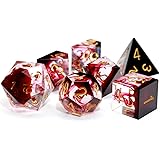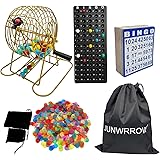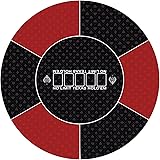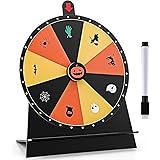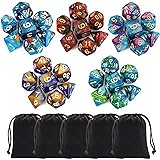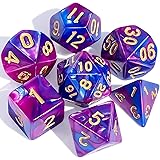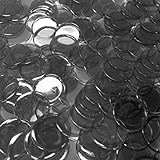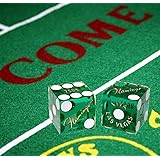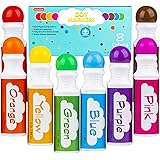Walking up to a lively craps table can feel exhilarating, yet also a little daunting. The dice are flying, chips are stacked high, and the cheers (or groans) of players fill the air. For many, it’s a game that looks incredibly complex, often leading to making bets without truly understanding the underlying probabilities. If you’ve ever felt like you were just throwing chips out there, hoping for the best, you’re not alone.
The video above does a fantastic job of breaking down the “best bets” in craps, focusing on a critical concept: the house edge. Understanding this percentage is your first step towards becoming a smarter player. This accompanying guide will expand on those insights, providing more context and practical advice to help you navigate the craps table with confidence.
Mastering Craps: Understanding the Best Bets for a Lower House Edge
The allure of craps is undeniable, but behind the excitement lies a mathematical reality known as the house edge. This isn’t just a fancy casino term; it’s the percentage the casino expects to keep from every bet placed over the long run. By grasping this concept, you can dramatically improve your chances of extending your play and having a more favorable outcome at the craps table.
Every bet on the craps table comes with a house edge, some much higher than others. Your goal as a player is to identify and consistently make the craps bets that offer the lowest possible house edge. This strategy helps to minimize your expected losses, turning a potentially volatile game into a more manageable and enjoyable experience.
What Exactly is the House Edge in Craps?
The house edge is the built-in advantage a casino has in any game. It’s how they stay profitable. Imagine a bet where the true odds of winning are 1 in 36, like rolling a specific number combination such as a 12 on two dice. A “fair” bet would pay you $36 for every $1 you wager if you win.
However, casinos don’t pay out at true odds. For that $1 bet on the 12, a casino might only pay you $30. That difference – the $6 they keep out of what would be a fair payout – is their house edge. In this specific example, betting on the 12 can carry a house edge of nearly 14% or even higher, making it one of the absolute worst craps bets you can make.
Over tens of thousands of rolls, the casino expects to keep that percentage from all money wagered. While you might get lucky in the short term, the math always favors the house in the long run. Understanding this distinction between short-term luck and long-term probability is crucial for any aspiring craps player.
Short-Term Strategy vs. Long-Term Reality
It’s easy to get caught up in the idea that you can “beat” the casino if you just make the lowest house edge bets. While a lower house edge absolutely gives you a better chance, it doesn’t guarantee wins. Instead, it guarantees smaller losses over an extended period. The casino sees hundreds of thousands of rolls a week; you, as an individual player, might only see a few hundred in a single session, or a few thousand in your lifetime.
Your goal is not to “beat” the casino over its lifetime, but to maximize your chances of winning or minimizing your losses during your session. Focusing on low house edge craps bets helps you overcome the inherent casino advantage for a day, a weekend, or even a lucky week. It allows your bankroll to stretch further, giving you more time at the table and more opportunities for those favorable short-term streaks.
Decoding the Best Craps Bets for Smart Play
Now that we understand the house edge, let’s dive into the top five craps bets that offer you the most favorable odds. These are the bets that savvy players gravitate towards to give themselves the best shot.
#5: Buying or Laying the 4 or 10
When you “place” the 4 or 10, the house edge is a hefty 6.7%. This is because the casino pays 9 to 5, while the true odds of rolling a 4 or 10 before a 7 are actually 2 to 1. However, there’s a trick to significantly reduce this!
Instead of placing, you can “buy” the 4 or 10. When you buy, the casino pays you at nearly true odds (2 to 1), but they charge a 5% commission, often called a “vig.” The key here is *when* that vig is collected. If the casino collects the 5% only on your winnings, the house edge drops to a much more attractive 1.67% (or 1.7% as mentioned in the video). For example, a $20 buy bet on the 4 or 10 would win $40, and the casino would take $1 (5% of $20) as commission, leaving you with a $39 net win.
However, if the casino charges the 5% vig upfront (meaning you pay $21 for a $20 bet), the house edge rises back up to around 5%, making it a less desirable option. Always ask about their policy on vig collection for buy bets.
A “lay” bet is the opposite: you’re betting that a 7 will roll before the 4 or 10. This is typically made by “Don’t Pass” players. If you lay the 4 or 10 and the vig is only collected on your win, the house edge is also 1.67%. For a $40 lay bet winning $20, you’d pay a $1 vig, resulting in a $19 net win. It’s less common to find casinos that collect the lay bet vig only on a win, but it’s worth inquiring if you prefer playing the “Don’t” side.
#4: Placing the 6 or 8
This is one of the most straightforward and popular craps bets for a good reason. When you “place” the 6 or 8, you’re betting that either of these numbers will be rolled before a 7. The payoff is 7 to 6, which is quite close to the true odds, giving it a low house edge of 1.52%.
To maximize your payout and avoid awkward change, always make place bets on the 6 or 8 in increments of $6. A $6 bet wins $7, a $12 bet wins $14, and so on. These bets remain active until they either roll (and pay you) or a 7 rolls (and you lose). Their simplicity and favorable odds make them a staple for many craps enthusiasts.
#3: The Pass Line or Come Bet
The Pass Line bet is often the very first craps bet new players learn, and it’s an excellent choice. It has a low house edge of 1.41%. Here’s how it works: On the initial “come out” roll, you win if a 7 or 11 is rolled. You lose if a 2, 3, or 12 is rolled. If any other number (4, 5, 6, 8, 9, 10) is rolled, that number becomes the “point.”
Once a point is established, your Pass Line bet wins if the point number is rolled again before a 7. If a 7 rolls before the point, you lose. The Come Bet is essentially the same as the Pass Line, but you can make it any time after a point has been established. It functions as a “mini Pass Line bet” for a subsequent roll, allowing you to get more action on the table.
#2: The Don’t Pass or Don’t Come Bet
For those who like to bet against the shooter (or at least, against the Pass Line), the Don’t Pass bet is your go-to. It’s the inverse of the Pass Line and boasts an even slightly lower house edge of 1.40%.
On the come out roll, the Don’t Pass bet wins if a 2 or 3 is rolled. You lose if a 7 or 11 is rolled. If a 12 is rolled, it’s a “push” or “bar,” meaning neither side wins and your bet is returned (casinos need a slight advantage, even on the “Don’t” side). If any other number becomes the point, your Don’t Pass bet wins if a 7 rolls before the point number is repeated. The Don’t Come bet is the equivalent of the Don’t Pass, but made after a point has been established.
While the difference of 0.01% between the Pass Line and Don’t Pass might seem negligible (a single penny per $100 wagered), for the mathematically inclined, it is technically the better choice among these two fundamental craps bets.
#1: The True Odds Bet (The Ultimate Advantage)
Hands down, the true odds bet (often called “free odds”) is the best bet you can make in the entire casino, not just craps. Why? Because it carries a house edge of 0.00%!
However, there’s a catch: it’s not truly “free,” nor can it be made in isolation. You must first have a “line bet” (either a Pass Line or Don’t Pass bet) to back it up. The line bet is where the casino collects its small edge. The odds bet is an additional wager that the casino pays at true mathematical odds, meaning they take no percentage from the payout.
The magic of the true odds bet is how it drastically lowers the *overall* house edge of your combined line and odds bets. For instance, if you make a Pass Line bet ($10) and then back it up with a single odds bet (another $10, matching your line bet), the combined house edge drops to approximately 0.8%. If you’re able to take “10 times odds” (meaning your odds bet is 10 times your line bet), the overall house edge plummets to about 0.2%.
It’s important to remember that while the odds bet itself has no house edge, you are still expected to lose the house edge percentage of your initial line bet. The true odds bet simply gives you a way to put more money into play at perfect odds, increasing your potential payout without adding to the casino’s mathematical advantage on that portion of your wager. If your bankroll allows for it, taking odds is always the smartest move to reduce your overall risk.
Whether you’re new to the craps table or looking to refine your strategy, focusing on these low house edge craps bets will give you a significant advantage. While it’s still gambling and outcomes are never guaranteed, playing smart increases your chances for a more successful and entertaining time.


